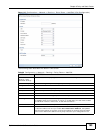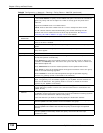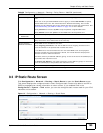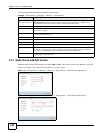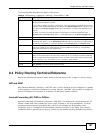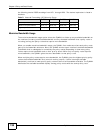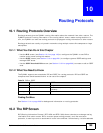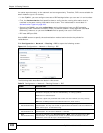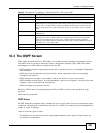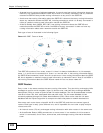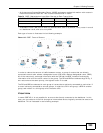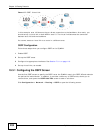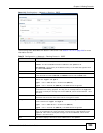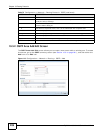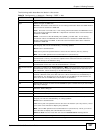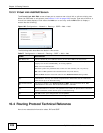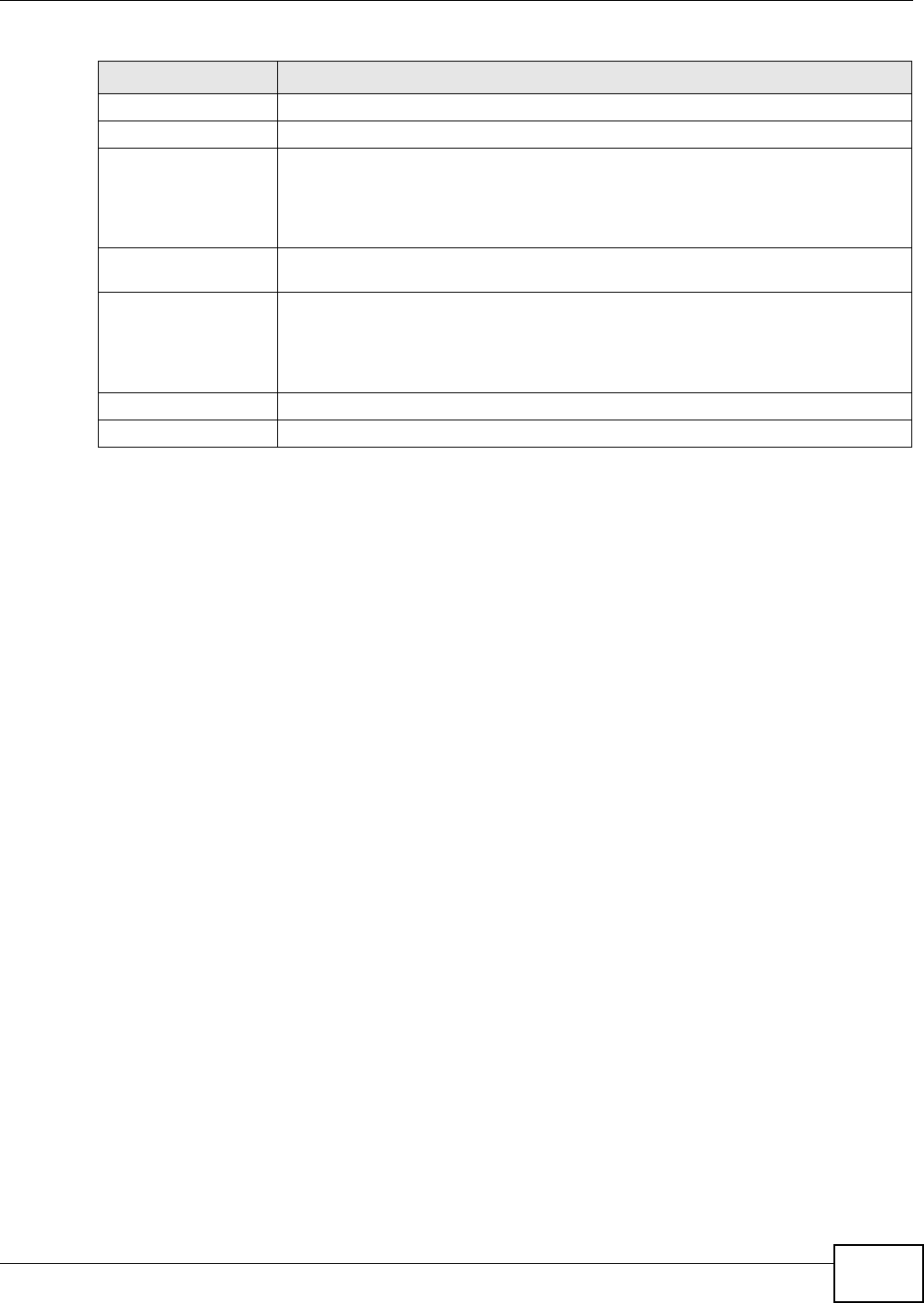
Chapter 10 Routing Protocols
ZyWALL 110/310/1100 Series User’s Guide
201
10.3 The OSPF Screen
OSPF (Open Shortest Path First, RFC 2328) is a link-state protocol designed to distribute routing
information within a group of networks, called an Autonomous System (AS). OSPF offers some
advantages over vector-space routing protocols like RIP.
• OSPF supports variable-length subnet masks, which can be set up to use available IP addresses
more efficiently.
• OSPF filters and summarizes routing information, which reduces the size of routing tables
throughout the network.
• OSPF responds to changes in the network, such as the loss of a router, more quickly.
• OSPF considers several factors, including bandwidth, hop count, throughput, round trip time, and
reliability, when it calculates the shortest path.
• OSPF converges more quickly than RIP.
Naturally, OSPF is also more complicated than RIP, so OSPF is usually more suitable for large
networks.
OSPF uses IP protocol 89.
OSPF Areas
An OSPF Autonomous System (AS) is divided into one or more areas. Each area represents a group
of adjacent networks and is identified by a 32-bit ID. In OSPF, this number may be expressed as an
integer or as an IP address.
There are several types of areas.
• The backbone is the transit area that routes packets between other areas. All other areas are
connected to the backbone.
Redistribute
Active OSPF Select this to use RIP to advertise routes that were learned through OSPF.
Metric Type the cost for routes provided by OSPF. The metric represents the “cost” of
transmission for routing purposes. RIP routing uses hop count as the measurement
of cost, with 1 usually used for directly connected networks. The number does not
have to be precise, but it must be between 0 and 16. In practice, 2 or 3 is usually
used.
Active Static Route Select this to use RIP to advertise routes that were learned through the static route
configuration.
Metric Type the cost for routes provided by the static route configuration. The metric
represents the “cost” of transmission for routing purposes. RIP routing uses hop
count as the measurement of cost, with 1 usually used for directly connected
networks. The number does not have to be precise, but it must be between 0 and 16.
In practice, 2 or 3 is usually used.
Apply Click this button to save your changes to the ZyWALL.
Reset Click this button to return the screen to its last-saved settings.
Table 73 Configuration > Network > Routing Protocol > RIP (continued)
LABEL DESCRIPTION



